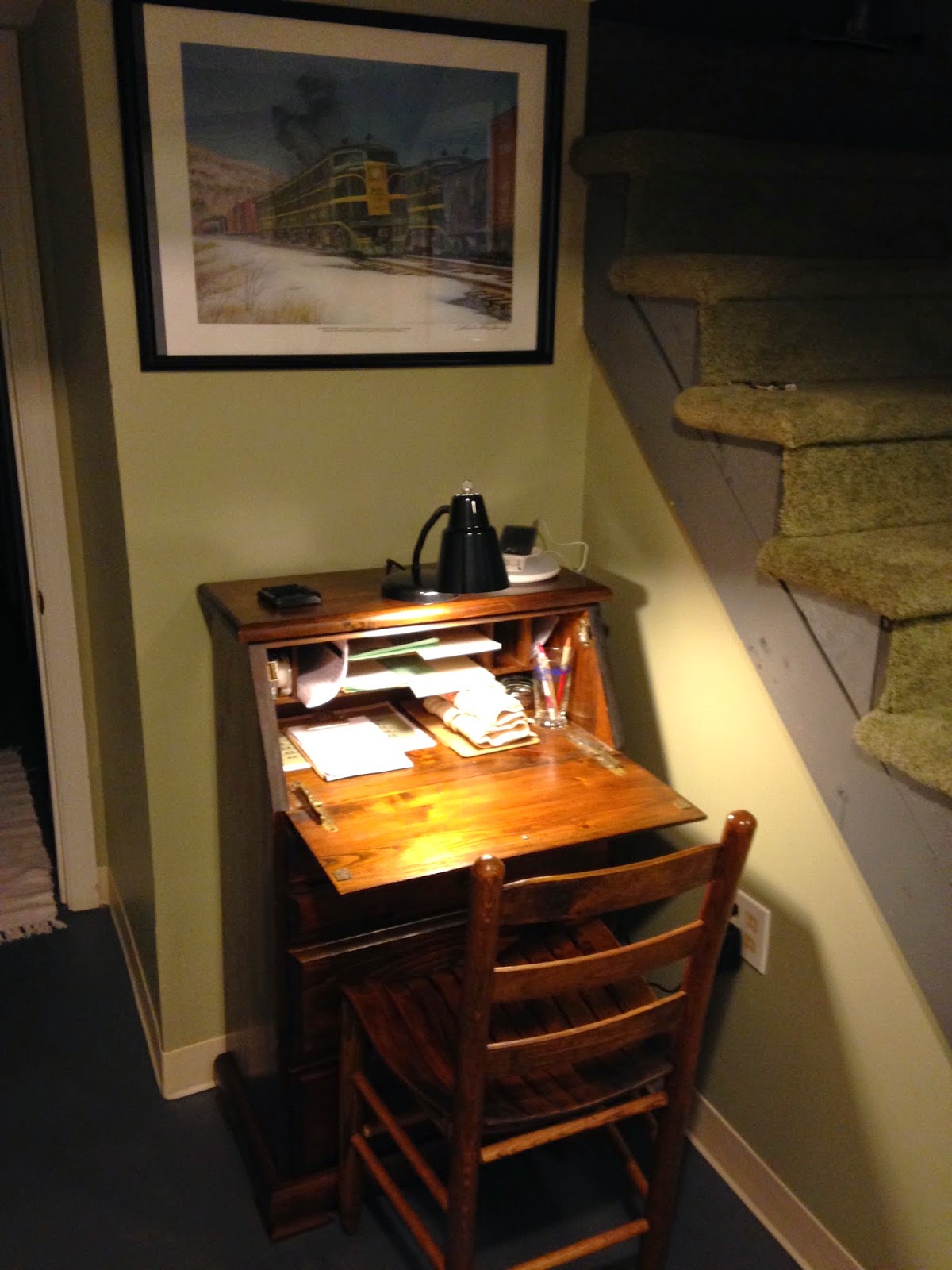I think so, and one effective way is to add an Agent-Operator - the most realistic job on a model railroad.
On the prototype,* the A-O was responsible for proper billings and collection, checking the location of cars, investigating damage claims, etc. He would also have maintained a station record of train movements on which he recorded train arrivals and departures and would issue train orders as needed. Most importantly for our purposes, he'd give local freight train conductors their switchlists - information on what cars in the area needed to be pulled & where they needed to go.
I'll have to credit my friend Randy with turning me on to this position. At an operating session (the best ideas always seem to come up for ops sessions) during the NE ProtoMeet, he asked me if I wanted to be the A-O for his session. Figuring it'd either be really fun or I'd really screw up his railroad (a win either way in my book <g>), I tried it out and quickly discovered how easy it was to forget I was working on a "model" railroad and not the real thing. I was getting records of cars being dropped off by through trains, recording train movements, and issuing switchlists to crews - it didn't matter that the trains were 1/87th scale and that the cars were, in fact, empty models. It really felt like I was doing bona fide railroad work. Now I'm totally hooked.
First, some preliminaries. You're still operating TT&TO so you still need paperwork to move your train. I use a Clearance Card A and a Form 19 train order (see below). You don't get to move without a clearance card and you don't know where to go without a train order.
So that takes care of how your train moves and where it goes. But what about what it does along the way? This is where having an Agent-Operator job on your railroad really makes a difference. The A-O at the initial station/yard gives the conductor a listing of all the cars in his train and where each car must be delivered - see the form we use on the right in the photo above. That's all the conductor gets with his clearance card and train order.
 |
| Clearance Card & Swtichlist made up based on prototype forms, but the Form 19 is an actual New Haven RR flimsy from a pad of them I acquired a while back. |
As the train arrives at each station, the conductor checks with the agent for the work to be performed in that town. The agent gives him another switchlist for that town - a listing of the cars that need to be pulled, and where they're going.
And so on.
The cool thing is that - at least for now (or until I can train somebody to take it over) - I'm the A-O at my layout. Both the Air Line Local and the Valley Local have to check with me each time they reach a station. And each time they check in with me, I give them the work that needs to be performed in that town - and also have an opportunity to issue any additional orders that govern the movement of their train.
The A-O position is typically simulated on a model railroad with bill boxes at each town. But on a railroad with few trains, having an actual person perform this task provides another job for someone to do.
When you're sitting at the desk doing your work, you might as well be working on an actual railroad. Unlike being an engineer or conductor, when you're working directly with the 1/87th scale models, the A-O's job is really not all that different than the real thing and "scales" well too. And that's why I think this job is one of the best ones you can get on a model railroad. Why not try instituting it on your railroad for your next ops session? If you do, let me know what you think!
And all this work is done on a really cool desk - set up as much like the prototype as you're able.
 |
| Agent-Operator's Desk: Prototype or Model? |
*Prototype information from an article by Richard K. Hurst & Edwin G. Motte, Jr. in the New Haven Railroad Historical & Technical Assn.'s Shoreliner magazine, Vol. 35, No. 3, pg. 22-23.

No comments:
Post a Comment